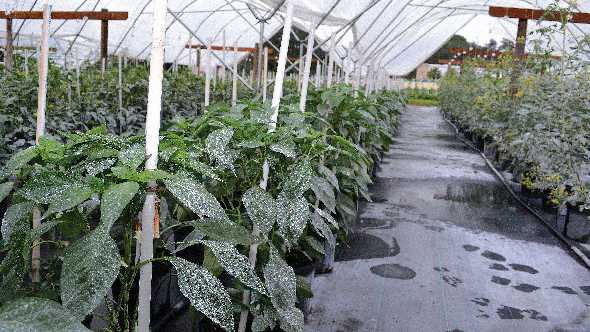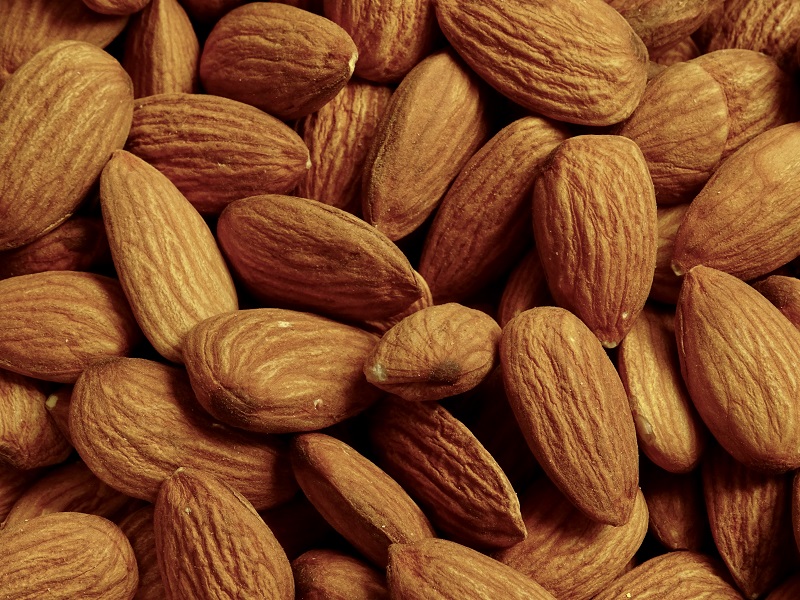Protected Agriculture Goes From High Tunnels To High Tech

Whether you’re a small, medium-sized, or large vegetable grower, chances are you’re considering getting into some protected environment production — if you’re not there already. Protected production can help you deliver high-quality produce with fewer pest problems over a longer season.
But where do you start? Depending on the market you’re serving, the crops you’re growing, your climate, and your plans for future growth, the type — or types— of structures you choose can range from a low-tech high tunnel all the way to a highly automated gutter-connected range of greenhouses.
We talked to structures experts for tips to help you decide whether protected production is right for your operation, and what type of structure and set up best fits your needs.

Photo by Frank Giles
Start In The Tunnels
If you’re making your first foray into the protected ag market, high tunnels or hoop houses may well be the place to start. Often, high tunnel growers are also open-field producers looking to get a jump on the competition by bringing product to market earlier than neighboring operations.
Bill Mathis, sales manager at Atlas Manufacturing, Inc., says high tunnel growers producing on a small scale typically sell their produce at roadside stands or local farmers markets.
“The main thing these farmers need is a simple structure that will allow them to extend their growing season and provide a protected environment to their crops,” Christine Meshell of JCM Greenhouse Manufacturing says. “It would not
be necessary for them to purchase an automated system at this point unless they will be growing hydroponically.”
Thanks to the EQIP Seasonal High Tunnel Initiative which is managed by USDA’s National Resources Conservation Services, growers can start out small with a 30-by-72-foot high tunnel and USDA provides significant funding, says Mathis.
According to information on USDA’s website on the 2014 EQIP Seasonal High Tunnel Initiative, the voluntary program provides financial and technical assistance to growers looking to extend the growing season while protecting the environment. (For more information on the high tunnel initiative, go to http://1.usa.gov/1u0hrMN.)
Follow Your Plan
However, if the plan is to produce vegetables in a state-of-the-art greenhouse in a couple of years, Justin Shelton, regional sales manager at Stuppy, Inc., says to skip the high tunnels.
“The structure and equipment design should be as close to a ‘prototype’ of your future facility as possible,” he says. “Prove your growing method, prove your sales, go through the pain of learning to operate the facility, people and product flow, and keep a working list of what you would change next time. After six months to one year of that process, you should have a list of customers that buy everything you can produce, have confidence in your processes, and all that is missing is additional capacity and economies of scale.”
If you aren’t yet to that point, then do not expand. “Only expand when your capacity is holding you back from sales and you need scale for profitability,” Shelton adds.
When you know it is time to expand, the greenhouse should accommodate your expansion plan. According to Zach Carr, greenhouse specialist at Growers Supply, gutter connect models should be considered. “Gutter connect greenhouses will reduce surface area to volume ratio, and thus reduce heat loss,” he adds.
Carr also tells growers to “avoid trying to save money by purchasing a greenhouse that will either be too short or not strong enough to support your crop’s requirements.”
When To Automate Or Upgrade
When should you look to automate? Some manufacturers say they should be considering automation when the initial investment is made.
Carr says to start with basic thermostatic controls for heaters and fans unless your budget allows for a programmable logic controller (PLC) such as LINK4.
“Do not wait to automate your equipment — human error can lead to unnecessary expenses and crop losses,” he says. “Basic automation with coil-type thermostats is inexpensive and has a quick return on investment.”
For the mid-size producer looking to grow his business, JCM’s Meshell says there are several rather simple and low-cost upgrades that can be done to improve existing greenhouses or high tunnels. Meshell suggests:
- Changing the poly to an anti-drip type of poly to decrease condensation dripping on plants in the greenhouse;
- Adding a second layer of poly to improve insulation;
- Adding gear boxes to the roll up curtains to make them easier to roll up and down;
- Adding circulating or HAF fans to improve air circulation inside the greenhouse; and
- Adding shade cloth to help decrease the temperature inside the greenhouse.
According to Stuppy’s Shelton, for mid-size growers a greenhouse environmental controller is a must. “It should include an alarm system that texts or calls you if there is system failure in your greenhouse, as well as the ability to monitor and control equipment remotely.”
Some large growers, however, can keep automation to a minimum, depending on what they produce. Atlas’ Mathis says his company supplies many large vegetable transplant producers, and most of the time the greenhouses for transplant use are not high tech.
“These facilities are naturally ventilated with roll up sides,” Mathis explains. “Mechanical ventilation isn’t necessary because transplants are moved to the open field before July and August, typically the hottest times of the year.”
Avoid Overbuilding
For any size grower, you want to avoid taking on too much. Stuppy’s Shelton says to evaluate your current facility and determine if you have reached your maximum capability. He says growers should fix any problems they have with their present structure because those issues can continue in a future expansion which can render the facility unusable.
All growers, he says, should strive to improve their operations but avoid trying to reinvent the wheel.
“You have been successful in the past and that has gotten you where you are today,” Shelton says. “Do what you do and make small adjustments in order to continuously improve.”










